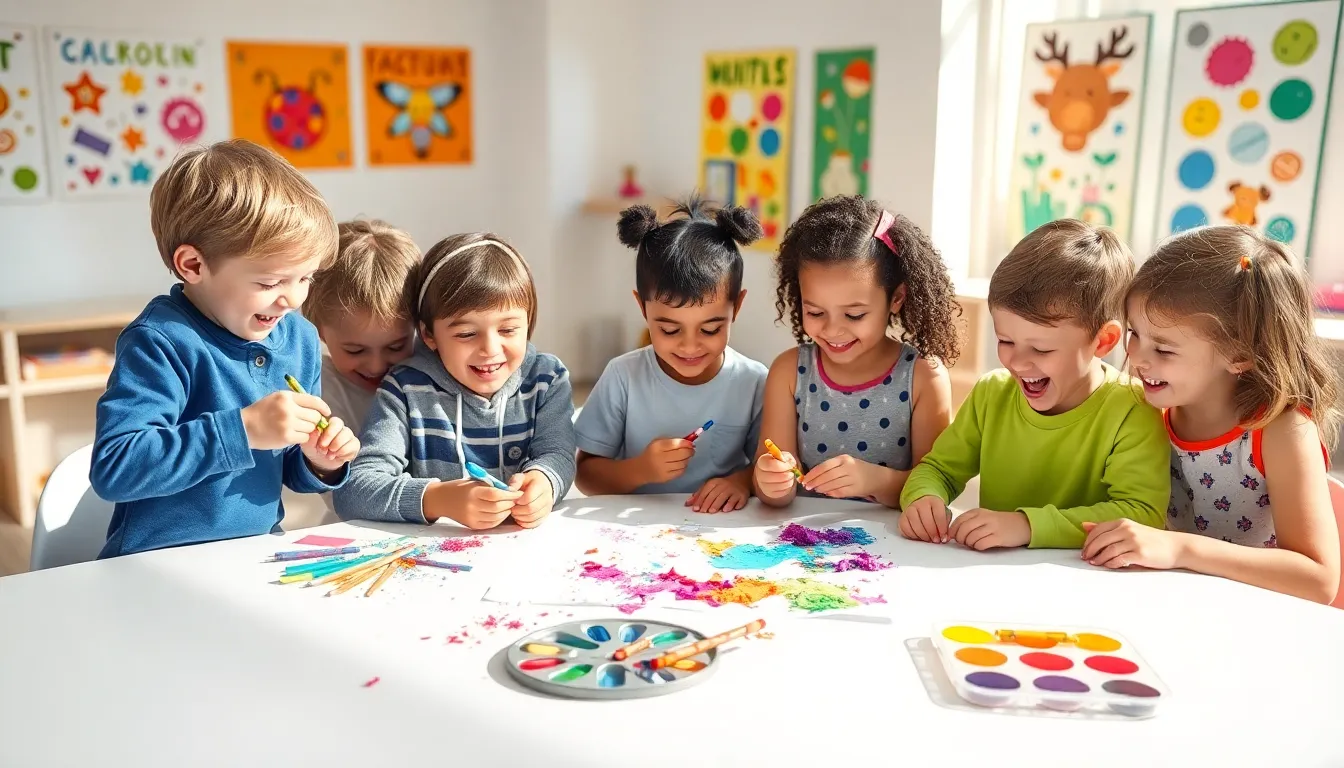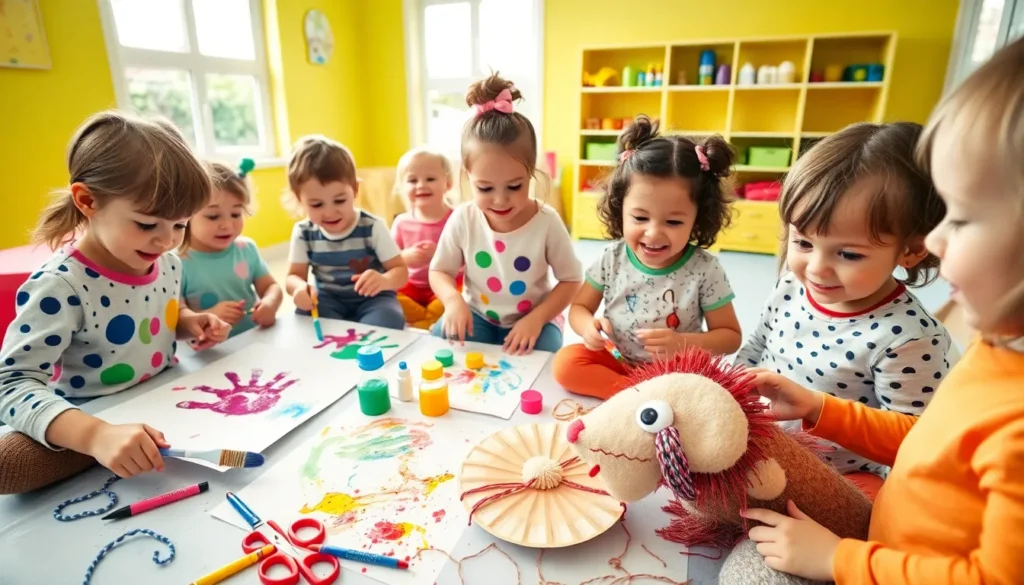Every parent knows that keeping a 3-year-old entertained is like trying to herd cats, it’s chaotic yet essential. Enter arts and crafts: the magical realm where creativity meets fun, and messes are a sign of success. This article dives into the realm of arts and crafts for 3-year-olds, capturing the transformative power of glue sticks and chunky crayons. Whether you’re a parent, teacher, or caregiver, this guide will open up a world of imaginative play, cognitive development, and emotional expression. So grab those supplies, and let’s get crafting.
Arts And Crafts For 3 Year Olds

Engaging in arts and crafts isn’t just about creating something pretty to hang on the fridge. It’s a cornerstone of early development for toddlers. First up, let’s talk about cognitive development. Through arts and crafts, children learn to think critically and solve problems. Deciding where to place stickers or how to mix colors sparks creativity and enhances their ability to engage in deeper thought.
Cognitive Development
Artistic activities stimulate brain development by introducing new concepts and fostering creativity. Just imagine the wonder in a child’s eyes as they realize blue paint mixed with yellow creates a vibrant green. This hands-on exploration transforms abstract ideas into tangible experiences.
Motor Skills Enhancement
Next, attention shifts to motor skills enhancement. Activities like cutting, gluing, and coloring require fine motor skills that are essential for daily tasks. Each snip with safety scissors and every crayon stroke builds hand strength and coordination, paving the way for later skills like writing.
Emotional Expression
Emotional expression also takes center stage here. Arts and crafts allow children to express their feelings visually, providing them with a crucial outlet. A child might fill the page with dark colors during a tough day or burst into cheerful yellows after a fun playdate. Understanding emotions and expressing them creatively can enormously influence a child’s social and emotional growth.
Fun And Engaging Activities
What good is crafting without some fun activities? Here are three crafts that are perfect for 3-year-olds.
Paper Plate Animals
First up: paper plate animals. This simple craft just requires paper plates, paint, and some imagination. Children can turn a plain white plate into a lion with a mane of yellow yarn or a colorful fish with a few brush strokes. This activity encourages creativity while developing fine motor skills.
Handprint Art
Next, who doesn’t love handprint art? Invite children to dip their hands in non-toxic paint and create vibrant designs. From trees to butterflies, the possibilities are endless. Plus, these masterpieces make great gifts for family members.
Painted Rocks
Last but not least, painted rocks. This activity adds a touch of nature into the mix. Kids can collect stones from the backyard, then unleash their inner artists with paints. Once dry, these rocks can be placed in the garden or given as colorful gifts, turning ordinary stones into treasures.
Simple Collages
Collaging is a wonderfully easy craft that allows toddlers to explore various materials and colors.
Materials Needed
To make a simple collage, gather materials such as colored paper, scissors, magazines, and glue sticks. Children can cut out interesting images or shapes and arrange them creatively on a larger piece of paper. This encourages not only creativity but also decision-making and spatial awareness.
Safety Tips For Crafting
While crafting can be a blast, safety should always come first. Keeping an eye on young ones is essential.
Supervision And Age-Appropriate Materials
Ensure there’s always adult supervision during crafting sessions to prevent mishaps. Also, choose age-appropriate materials like non-toxic paints and rounded-edge scissors. Avoid small objects that can be choking hazards, and always explain the importance of using tools safely.
Creating A Craft-Friendly Space
Setting up an ideal craft-friendly space can invigorate creativity and make crafting sessions smoother.
Organizing Craft Supplies
Start by organizing supplies. Clear bins or containers labeled with different materials can help children easily find what they need. This organization fosters independence and responsibility.
Setting Up A Designated Area
Establish a designated area for crafting, whether that’s a corner of the dining room or a small table in the playroom. A consistent space signals that it’s crafting time and allows for creativity to flourish without continual cleanup hassle.
